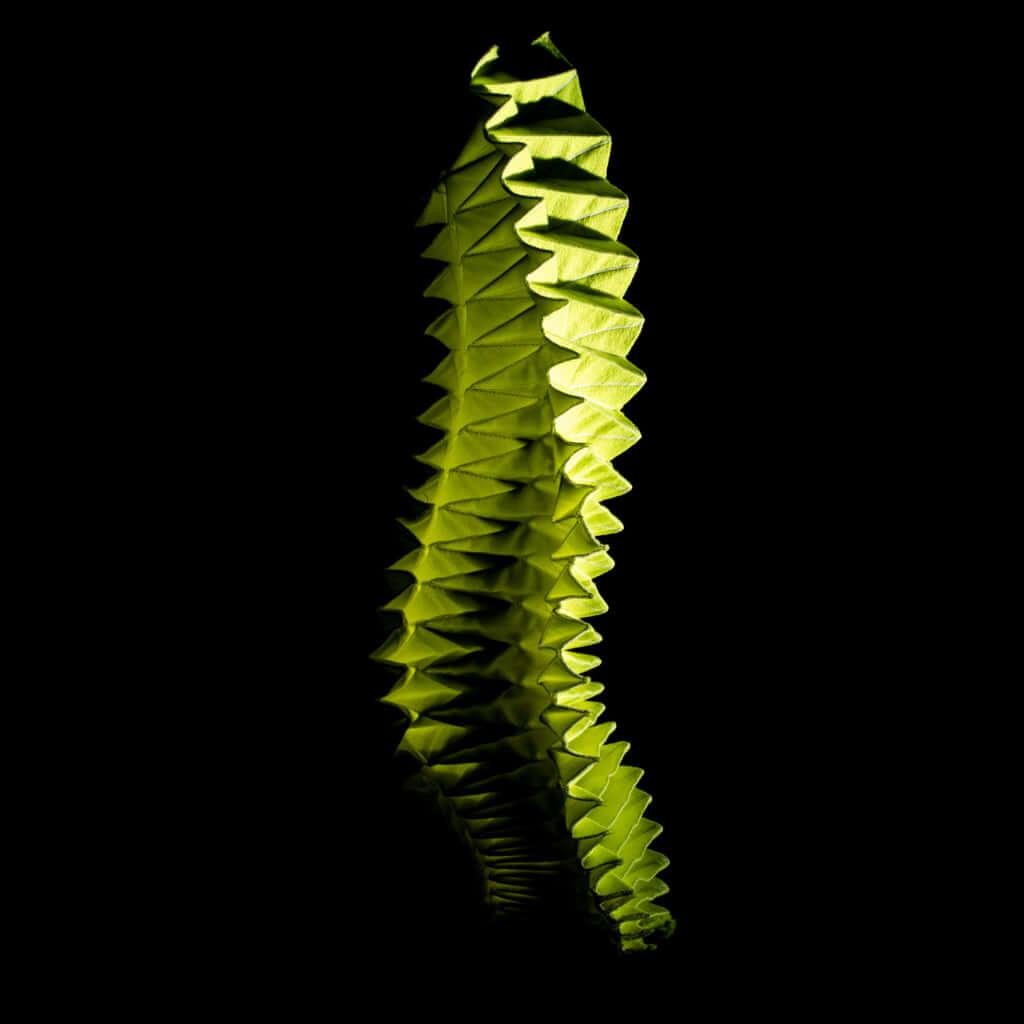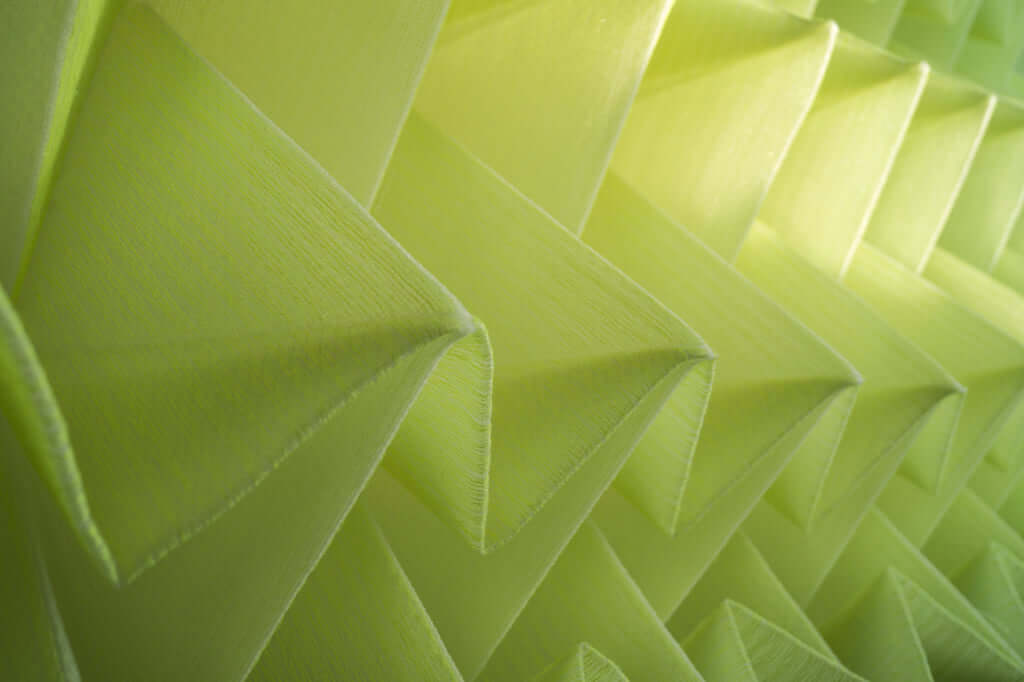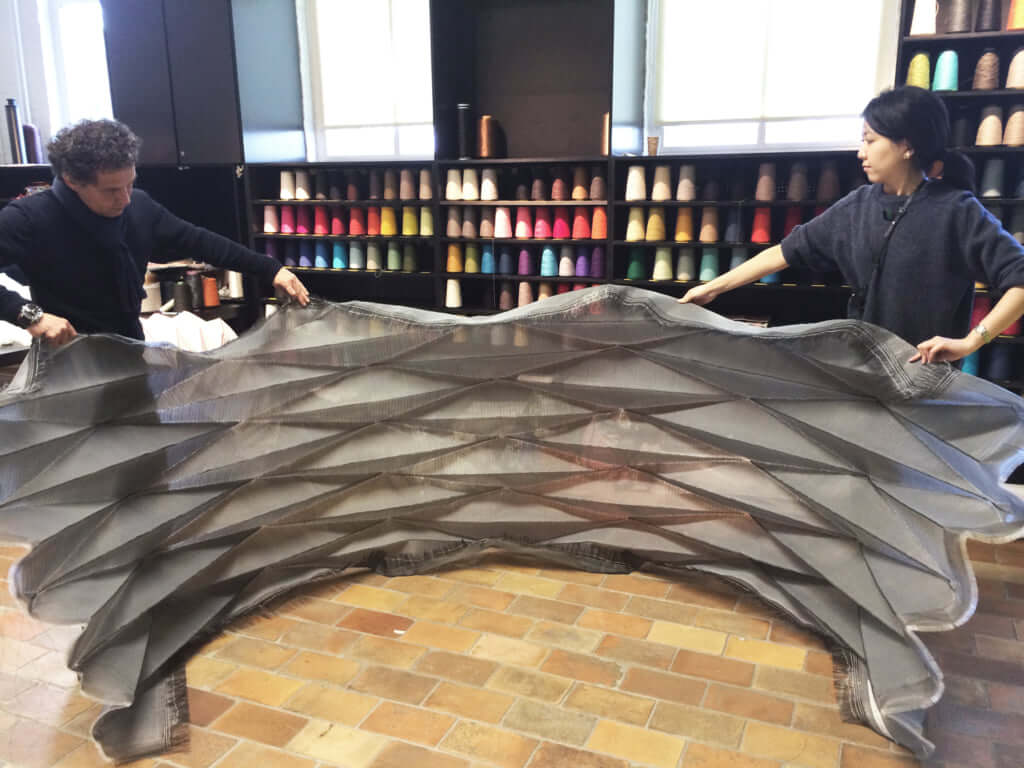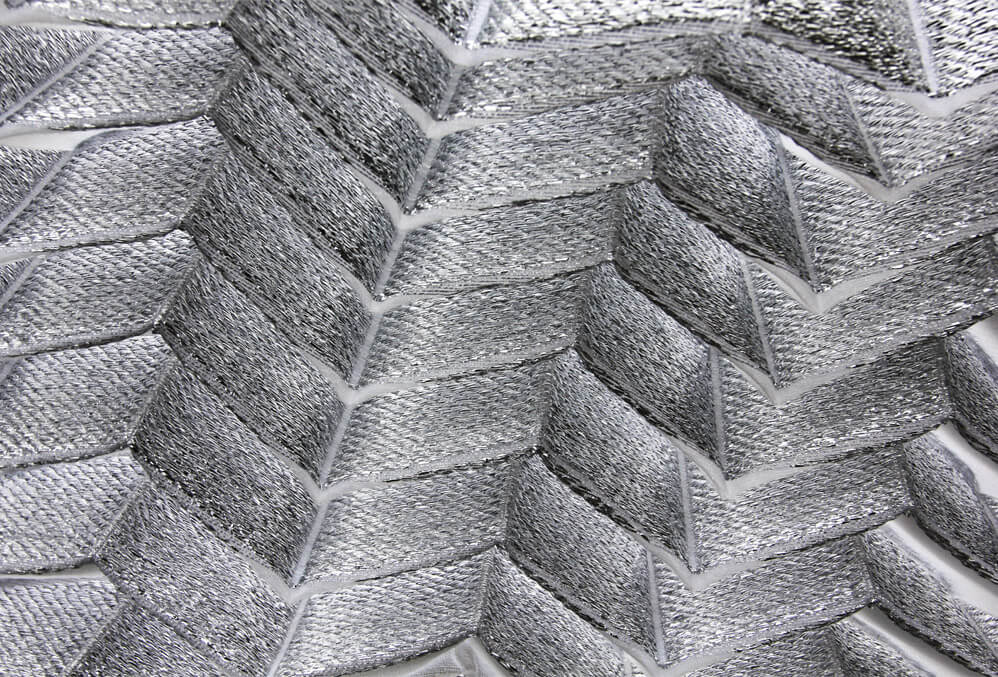An Origami-inspired Habitat Project for the Moon
In this project, individuals working in space research are drawing inspiration from the art of Japanese paper-folding.

©Samira Boon Studio
A team of artists and scientists, including astrophysicist Bernard Foing (from the European Space Agency), has developed a project consisting of origami structures designed to go on the Moon and Mars. This art, which was popularised in around the 17th century in Japan, offers many interesting characteristics for space research.
These light and flexible ‘origami tents’, made from highly resistant material, can be folded and unfolded over and over again and change shape according to the characteristics of their environment. They keep those inside safe, protecting them from the impact of micrometeorites (which bounce off their many edges), while the built-in solar panels on the surface provide the energy required to fuel their stay. A further advantage is the fact that they limit space debris as they are infinitely recyclable, their multiple sides allowing them to be ‘reinvented’ for each new space mission.
First tested in 2019
This project inspired by a Japanese tradition is only at the prototype stage, but it’s a perfectly serious idea. In June 2019, one of these ‘origami habitats’ was tested in a demonstration igloo built by the Swiss Space Centre under the Matterhorn Glacier in Switzerland. Who knows: perhaps it will one day be seen on the icy surface of Mars.

©Samira Boon Studio

©Samira Boon Studio

©Samira Boon Studio

©Samira Boon Studio
TRENDING
-
A House from the Taisho Era Reveals Its Secrets
While visiting an abandoned building, Hamish Campbell discovered photographs the owner had taken of the place in the 1920s.

-
The Taboo-Breaking Erotica of Toshio Saeki
The master of the 1970s Japanese avant-garde reimagined his most iconic artworks for a limited box set with silkscreen artist Fumie Taniyama.

-
With Meisa Fujishiro, Tokyo's Nudes Stand Tall
In the series 'Sketches of Tokyo', the photographer revisits the genre by bringing it face to face with the capital's architecture.

-
Masahisa Fukase's Family Portraits
In his series ‘Family’, the photographer compiles surprising photos in which he questions death, the inescapable.

-
Hajime Sorayama's Futuristic Eroticism
The illustrator is the pioneer for a form of hyperrealism that combines sensuality and technology and depicts sexualised robots.





